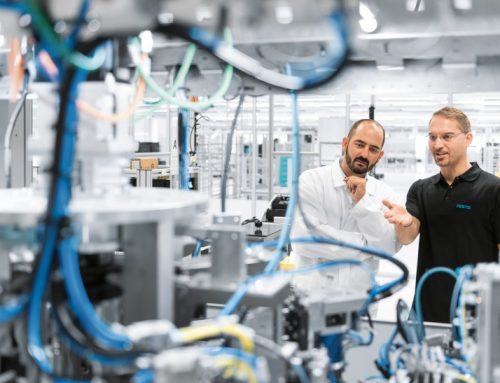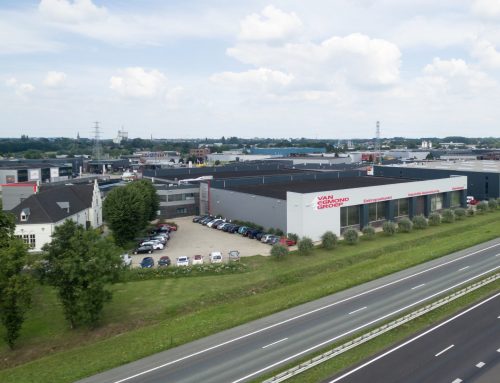As usual at the start of each year I make a summary of my supply chain predictions for the coming year. I also include some of the Gartner predictions for chief supply chain officers, though as always these predictions are more future-oriented than just what is going to happen in 2017.
The Use of Predictive Analytics will show clear results in manufacturing
We’ll see a push by sector leaders to accelerate the realization of the Industry 4.0 vision. In 2017 we will see that bigger data doesn’t make us smarter unless we combine the intelligence with ‘actionable insights’, so solutions for problems that require effective decision making. Many vendors are still telling us that having all the data in one place is the goal. In reality, it’s just a step in the journey.
Advanced analytics and machine learning technologies that can simulate supply chain scenarios, predict outcomes and make recommendations are chaning the game. The applications of predictive analytics are nearly endless, from deciding where and how to source materials to managing supply risk and optimizing production and logistics.
Industry leaders are on the way tol deploy “digital operations centers” that deliver real time information based on function and role. These centers will combine structured data from business systems and IoT with unstructured data such as weather, traffic, and customer sentiment. The goal is to not only measure what’s happening in the supply chain but also to predict it.
Transparency, Quality and Sustainability will win over cost based Decision Making
The days of making supply decisions solely based on cost are long gone. Today’s buyers want to ensure the products they purchase are safe, of high quality and responsibly sourced. This is especially true in the food services industry, which has seen a massive movement away from low-cost offerings to healthier alternatives. Beyond product, suppliers will be selected based on speed en flexibility in 2017.
APIs and Web Services replacing EDI as the preferred approach moving forward
Supply Chain Operating Networks, which are the business equivalent of Facebook and LinkedIn, have enabled communities of trading partners to communicate, collaborate, and execute business processes in more efficient, scalable, and innovative ways. However, the traditional onboarding process, which relies on Electronic Data Interchange (EDI) mapping and testing, is still too labor-intensive and time-consuming.
Recently we did a calculation showing that for a company with 300 suppliers, it would normally take about 22 years to onboard them at the rate they were doing it, which was obviously not acceptable, especially when you’re talking about a network and trying to create change and enable collaboration. We realized that we needed to reduce the onboarding process from months to weeks to days, and eventually, to hours. This makes Tradecloud to invest in innovating the onboarding process.
Although EDI remains well-entrenched, especially among large companies, the future of B2B connectivity is Application Program Interfaces (APIs) and web services. EDI is like mailing a postcard to somebody and hoping they get it. APIs are more like having a real live phone call with somebody. As time passes, there will be a point where companies that rely only on EDI will be left behind.
Global logistics – 3PLs will control an amazing 80% of the world’s logistics
On the global logistics front, Gartner expects that by 2020, 80% of organizations “will fail to contractually accommodate the looming 3PL power shift.” Driving that shift will be continuing industry consolidation, with Gartner predicting that the top 10 global 3PLs will control an amazing 80% of the world’s logistics volume by 2020. That would be quite a market development if accurate.
As result, companies will need to move their approaches away from focusing on price as the primary determinant for choosing a 3PL, Gartner says. 3PLs will increasingly walk away from business that is seen as primarily cost-focus, whereas companies that negotiate and contract under a balanced set of terms and conditions will be viewed, naturally, more favorably.
90% of software is cloud-based supply chain software
Gartner also has a prediction relevant to Cloud-based supply chain software, saying it expects that by 2020, over 90% of spending on supply chain execution systems will be for Cloud-based solutions. That would mean that virtually all supply chain execution software (generally thought to include TMS, WMS, Global Trade Management, visibility and more, but not planning systems) will run in the Cloud.
“Initial concerns about security, response time and service availability have diminished significantly for many organizations, as Cloud business and computing models have matured and adoption has become more widespread,” Gartner says. It adds that replacement of old enterprise software systems for Cloud-based technology “is starting to accelerate.”
More women
Another Gartner prediction is that by 2020, women will comprise 40% of director-level positions in leading global supply chain organizations. That would be a big jump from the 20% level of women in those senior-level roles currently. Can more women in supply chain provide part of answer to the expected “talent crisis” in supply chain? Maybe so.
What’s your take on these analyst predictions? Which ones ring most true? What predictions for 2017 would you add? Let us know your thoughts.





